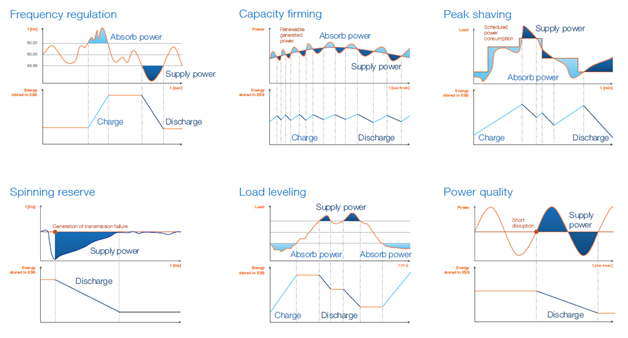

The PCS ESS range is part of a family of energy storage system converter products available from Future Energy. Based around a low voltage converter platform the PCS ESS provides wide bandwidth performance with a flexible and highly modular power electronic configuration.
New energy storage devices such as latest generation batteries, flywheels and super capacitors provide the opportunity to store energy from the electricity grid and return it when required. This offers a huge range of options to strengthen and enhance the performance, quality and reliability of smart electricity grids. The PCS ESS allows control of both real power (P) and reactive power (Q) based on the system requirement. Advanced control features in the “Virtual Generator” mode of operation make the PCS ESS look like a true power system component.
In Virtual Generator mode the converter looks to the power system like a traditional synchronous machine. This is achieved through power electronic control and there are no large spinning masses. Inertia can be modeled with the system enabling it to deliver to or draw power from the grid dependent on the rate of change of system frequency.
In case of grid supply loss the system can shut down (according to anti-islanding standards) or be set to operate in island mode, where the PCS ESS operates disconnected from the main grid but continues to supply local loads. When the grid returns the systems can automatically resynchronize and return to grid-connected mode.
